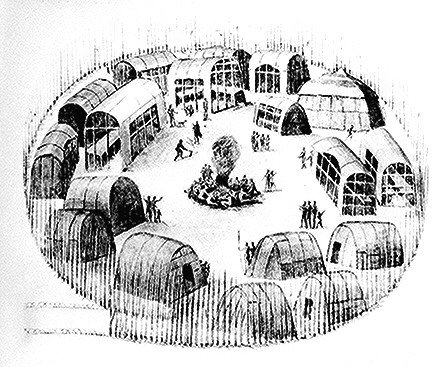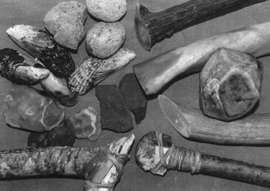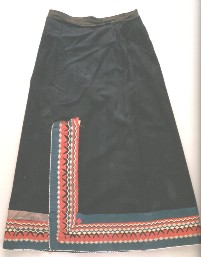|
|
|
| The Potawatomi Indians lived in many different states in the United States. They had many tribes in Kansas. They have a lot of cultures. They were also involved in some wars. | |
|
Who are the Potawatomi Indians? The Potawatomi Indians is a large group of people called Nishinabe. The members include Ojibwe and Ottawa. The Potawatomi belong to the Algonquin language. The name Potawatomis translation of the Ojibwe meaning "people of the fire." They were said to "Fire builders" because when group decided to separate from parent family, and become a tribe, they decide to build a council Fire for themselves. Each tribe were responsible for each other. The Potawatomis were keepers of the Monido Ish-Ko Day. They had responsibility of keeping the coals always burning. There are about 28,000 Potawatomi Indians living today. |
|
 these
are the wigwams they lived in these
are the wigwams they lived in |
The Indians were comprised of divisions. The forest Potawatomi are those who remained in the forest of Wisconsin and Michigan. Those who moved south into Prairies of Illinois and Indiana became known as Prairies Potawatomi. There are seven separate groups of Potawatomis. Six are in the United States and one in Canada. The seven groups are Canada, Citizen, Forest Count, Hannaville, Huron, Pokogon, and Prairie. |
|
Culture of the Potawatomi The Potawatomi Indians were hunters so they provided for themselves very well. Their diet consisted of wild game, fish, fish oak, acorns, and maple syrup. They learned farming from the Saux Fox, Kickapoo, and Winnebago. They learned how to grow squash and pumpkins and had large cornfields. The tobacco that they grew was used for ceremonies carrying prayers to the Great Spirit. The Indians became well-known for their medicinal herb gardens. |

These are the tools they used |
| The Potawatomi were a little shorter but more robust than other Algonquins. They lived in oval dome-shaped wigwams. In later years they preferred living in log cabins like their white neighbors. The warriors all wore long hair except for war time. War paint was red and black. Women's hair was parted in the middle with a long braid behind. | |
|
This is the skirt they wore |
History of the Potawatomi
The alliance is not as well known as the Iroquois whom they often clashed, but it was the Three Fires who came out on top in the end. The Potawatomi Indians supported the Shawnee leaders Tecumseh and Prophet during the war of 1812. They were fighting on the British side. The Americans didn't defeat the British, but they did win over the Indians. The Indians were moved to Iowa , Kansas, and Oklahoma. Some by peace treaties others by marches at gun point. Some groups remained in Great Lakes. To this day some still live in Kansas and Oklahoma. |
| Location of the
Potawatomi
They came from the Great Lakes Region. They lived mainly in Illinois, Indiana. Michigan, Wisconsin, and Ontario. In 1660 they lived in northern third of Michigan. 30 years later they left their homeland because of threats and trading. By 1665 all the Indians were living on Wisconsin's Door Peninsula in Green Bay. By 1716 the villages were located between Milwaukee and Detroit. |
|
| When land cessions to America began their territory was reduced. After that all removes into two groups: The Prairie and Forest Band and the Potawatomi of Wood which was located in Osawatomie, Kansas. The two groups merged as one, and was placed on a single reservation North of Topeka. Arguments over allotments and citizenship led to their separation. Prairie Potawatomi stayed in Kansas and still have reservations. |

These are the shoes they wore |
| As you can see their is a lot of information about the culture, history, and location of the Potawatomi Indians. | |
|
Kristen Ronnbaum 8th American History Rossville Jr. High Plains History Project 2004
|
Bibliography |
|
Revised: December 23, 2004 . |
|

